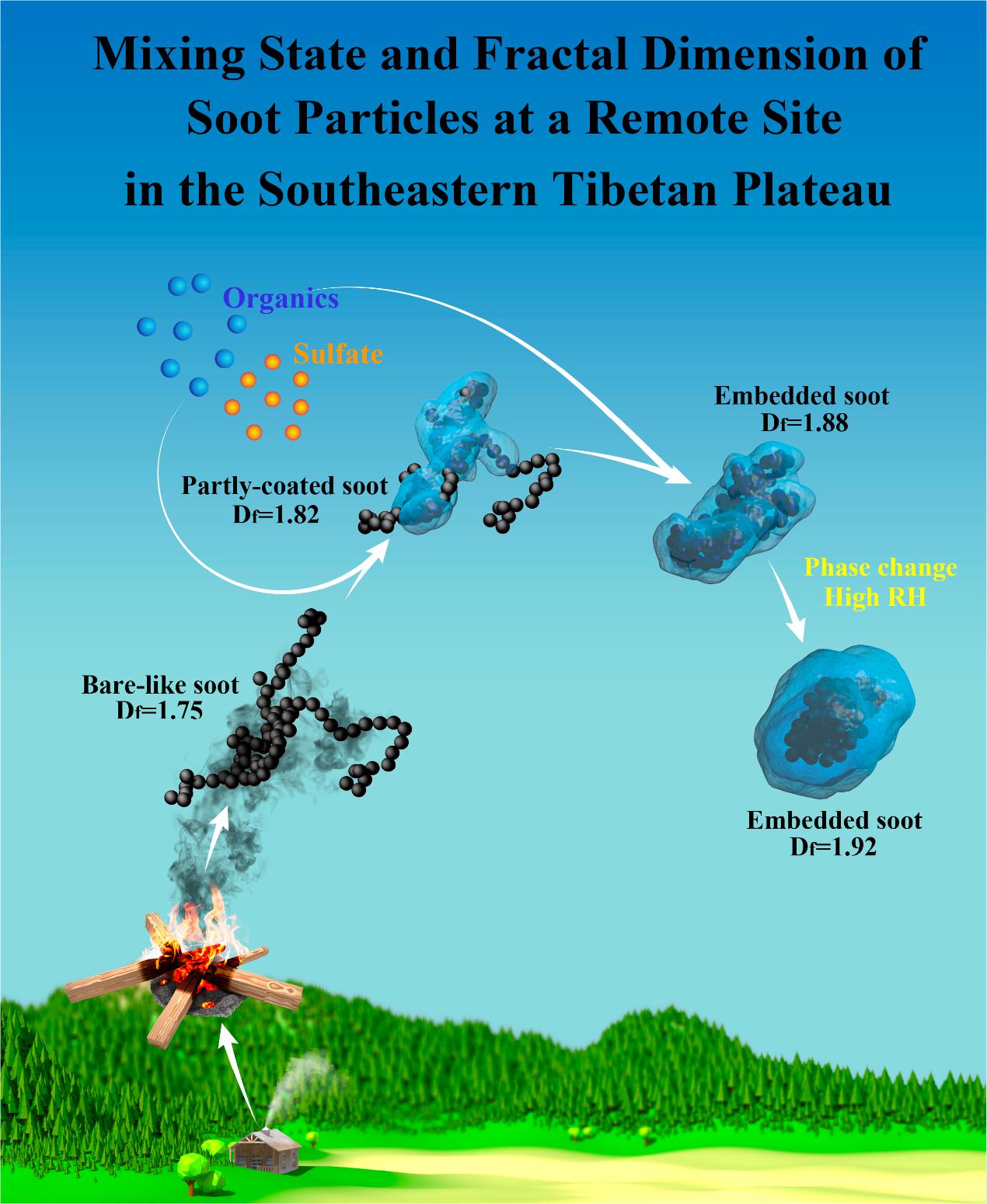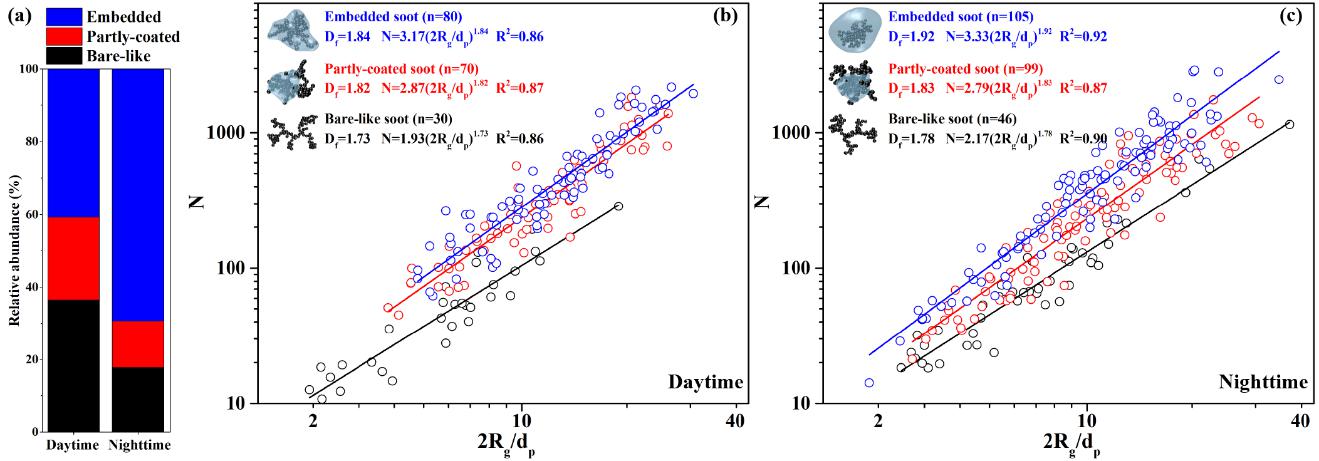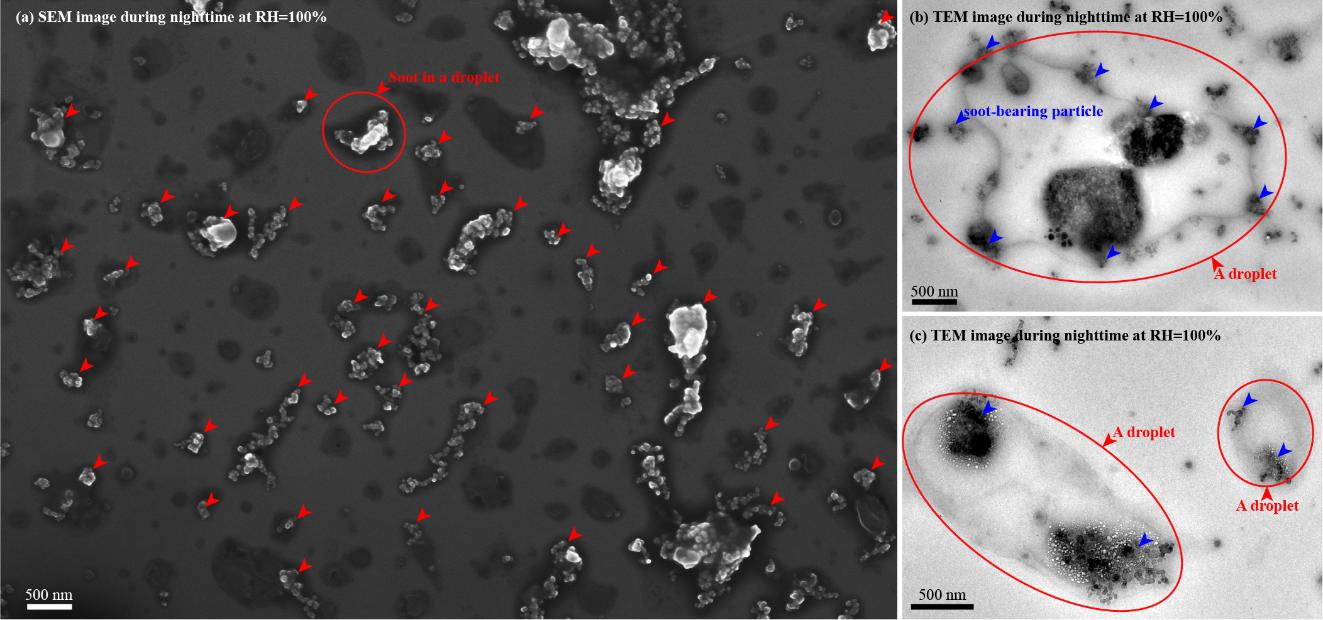Editor: 邵丹蕾 Author: Yuan Qi Time: 2019-07-19 Number of visits :282
The new study of Prof. LI Weijun group has been published online by Environmental Scicence & Technology (IF=7.1):Mixing State and Fractal Dimension of Soot Particles at a Remote Site in the Southeastern Tibetan Plateau.

Figure 1. A conceptual model art
Black carbon (soot) is a typical light-absorbing aerosol component of fine particles from biomass or fuel burning and might be the second positive radiative forcer in the atmosphere.Because of its strong light absorption capacity, soot has been proved to affect the regional climate and glaciers’ retreat of Tibetan. However, physical and chemical data of soot particles were still limited in the vast TP and the data scarcity serves as an obstacle toward an accurate simulation in atmospheric models of their optical absorption in the TP.
The mixing state and fractal dimension (Df) of soot particles are two major factors affecting their absorption capacity and their climate effects. Here we investigated these factors of soot particles found in a typical valley of the southeastern Tibetan Plateau where wood burning in local villages was one major source of soot particles. Our motivation revealed Df and the aging property of soot particles in remote air and discussed their regional climatic implications. We found that 64% of total analyzed particles by number were soot-bearing particles and most of them aged with sulfate or organic coating. The Df sequence is bare-like soot (1.75 ± 0.08) < partly coated soot (1.82 ± 0.05) < embedded soot (1.88 ± 0.05). The aging process enlarged the overall size of the soot-bearing particles and increased the compactness of soot. Soot aging critically depended on high relative humidity (RH) during nighttime. Besides emission sources and coating processes, the coating aerosol phase under different RHs is another important factor affecting the soot Df. These results provide important information for better understanding the climatic effect of atmospheric pollutants from the interior of the TP.

Figure 2.TEM images, EDS and size distributions of soot-bearing particles in this study. (a) TEM image of bare-like soot, (b) TEM image of partly-coated soot, (c) TEM image of embedded soot, (d) EDS of bare-like soot, (e) EDS of partly-coated soot or embedded soot, (f) Size distribution of soot-bearing particles. ECD of partly-coated soot and embedded soot particles contained the size of soot and its associated coating.

Figure 3. Relative abundance and fractal dimension of soot-bearing particles collected at the Lulang site during daytime and nighttime. (a) Relative abundance of soot-bearing particles in the daytime and nighttime, (b) Fractal dimension of soot-bearing particles in the daytime, (c) Fractal dimension of soot-bearing particles in the nighttime. The parameter n in parenthesis represents the total number of soot particles analyzed for each soot category to calculate Df and kg.

Figure 4. SEM and TEM images of soot-bearing particles during nighttime at RH=100%.
The first author of this study is Qi Yuan, a post doctor in Prof. LI Weijun group, and the corresponding author is Prof. LI Weijun. This work was funded by National Natural Science Foundation of China, the Strategic Priority Research Program of Chinese Academy of Sciences, Pan-Third Pole Environment Study for a Green Silk Road (Pan-TPE), China Postdoctoral Science Foundation, Zhejiang Provincial Natural Science Foundation of China, the Research Funding of School of Earth Sciences of Zhejiang University and Zhejiang University Education Foundation Global Partnership Fund.
Citation: Qi Yuan, Jianzhong Xu, Yuanyuan Wang, Xinghua Zhang, Yuner Pang, Lei Liu, Lei Bi, Shichang Kang, and Weijun Li. Mixing State and Fractal Dimension of Soot Particles at a Remote Site in the Southeastern Tibetan Plateau, Environmental Science & Technology, 2019, 53, 8227-8234.
Paper download: https://doi.org/10.1021/acs.est.9b01917.
